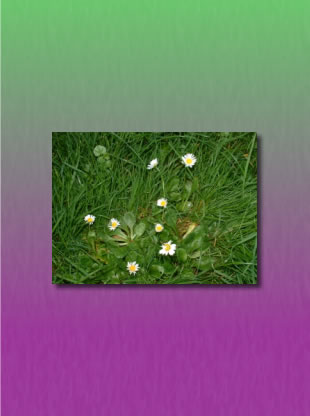 |
 |
DAISY
(Bellis perenis)
Related to feverfew
Bellis means pretty, also know as Bruisewort
Use flowers and leaves
Not often used by modern herbalists but has a long tradition
of use going back to Pliny. It can be used instead of
the endangered Arnica and is much safer
MEDICAL PROPERTIES AND USES
· Expectorant - use for chesty coughs
· Antimicrobial
· Astringent - use for wounds and bruising
especially those that get worse with heat or touch,
recovery from injury, especially falls, twisting or
wrenching (i.e. sports injuries)
Also indicated for:
· Muscular aches
· Arthritis
· Headaches
· Allergies
HISTORICAL USES
Used in medieval times to heal wounds and bruises:
the crusaders used daisy ointment for broken bones.
The leaves were chewed for mouth ulcers and it was
said that 3 heads of daisy alleviated the ache after
a tooth was pulled. Other traditional uses were catarrh,
migraine, heavy menstruation, rheumatism and bronchitis.
HOW IT WORKS
Works by contracting muscles and veins to ensure adequate
tissue perfusion and improves blood circulation, also
dispelling congealed or coagulated blood. Therefore
could be good at reducing the appearance of varicose
veins. Used for deep tissue damage especially in abdomen,
trunk, breasts and pelvis when the patient feels stiff
or cold. Good for post operative healing, prevents
suppuration, soothes the pain of cut nerves and relieves
internal soreness. Rub on the abdomen of a pregnant
woman if the womb feels bruised. If Arnica hasn’t
helped with an injury try Daisy.
Back to Monographs
|
|
|
About
Herbal Medicine
The Consultation
Your Herbalist
Newsletters
Monographs
Herbcraft
|
|
